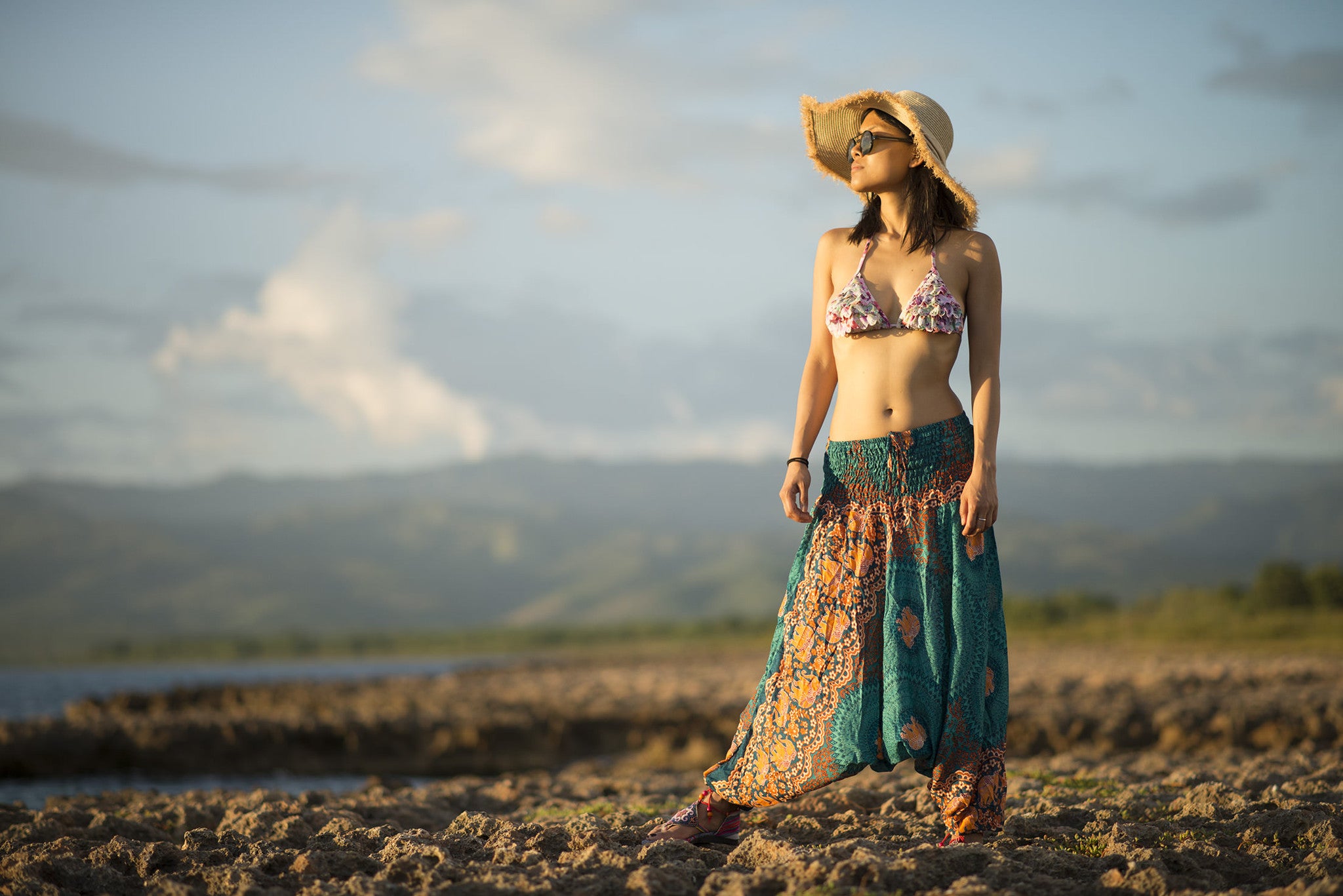How Well Do You Know the History of Harem Pants?
Modern harem pants are associated with laid-back living and casual culture; with a comfortable fit and a liberating sense of unrestrained style.
They’re so deeply entrenched in Western fashion, that it’s easy to forget that harem trousers have been around for centuries - in several different locations around the world. The name itself gives a clue about their origins, but how often do you ask yourself where the evocative name ‘harem pants’ came from?
Here’s some insight into the history of these iconic trousers – and their fascinating journey from the deserts of Africa to the fashion-forward cities of the 21st century.
A Truly Persian Pant?
The exact origins of the baggy harem trouser that we know and love are unknown. It’s been suggested that harem pants were first worn by Persian men, as long as 2,000 years ago. However, others disagree with this, and suggest that the first true harem trousers were developed later than this; in the Middle East, North Africa or Turkey.
This would go some way to explaining the name. A term ‘harem’ is defined as a ‘sacred place for female members of the family’ in Arabic culture. Harems were usually made up of wives and concubines, and men were forbidden to enter. 19th century illustrations showed Northern African women from harems wearing large, tulip-shaped trousers to preserve their modesty – and this is where it’s generally agreed that the name originated.
Harem Trousers’ Asian History
It wasn’t just Africans, Turkish or Middle-Eastern people donning harem pants. There’s strong evidence to suggest that a similar style of trouser was also being worn in south-east Asia; particularly among the Hmong people of China, Vietnam, Laos and Thailand.
However, there were marked differences in style. Whereas Arabic harem pants had a distinctive tulip bottom to each leg, Hmong harem trousers were often wider and lower on the crotch.
Harem Pants - French Army Fashion
In the 19th century, French military recruits serving in Northern Africa observed the locals wearing comfortable harem trousers. The soldiers saw the benefits of wearing loose, airy material in the hot desert – and swiftly incorporated the style into their uniform. It’s suspected that this is how harem pants were first introduced to Europe.
The suffragettes were famous for spurning constrictive corsets and skirts, and were the first European women to embrace the harem pant style; which resulted in predictable protest from their conservative counterparts. In America, Amelia Bloomer made it her personal mission to convince fellow females that harem pants were more comfortable than restrictive dresses – and her legacy was to give the trousers another popular name… the bloomer!
It wasn’t until 1920s France, when the designer Paul Poiret incorporated harem pant-inspired fashion into his designs, that the iconic trousers started getting serious attention. His combination of exotic harem trouser, combined with Arabic-inspired head-dresses and kaftans, went against the popular belief that women should stick to skirts; and he was criticised for his ‘sexualised’ and ‘inappropriate’ designs.
Moving Harem Trousers into the Modern Era
The flowing hippy styles of the 1960s and 1970s were undoubtedly inspired by Poiret’s iconic designs. However, it wasn’t until the 1980s that harem trousers were finally given the recognition they deserved. The humble harem trousers’ most celebrated outing was on the rapper MC Hammer, whose deep red, shiny pants, combined with a bold yellow tailored jacket, went down in history as one of music’s most memorable outfits.
These days, harem trousers have become a firm favourite in fashion circles; with celebrities such as Rhianna, Heidi Klum and Jennifer Lopez being papped wearing them. Modern harem pants often feature bold, Asian or African-inspired prints as an homage to their origins. Asymmetric tasselled designs hark back to north African styles and exceptionally low crotches are very reminiscent of the Hmong take on the harem trouser. Best of all, harem pants can be worn in a variety of situations – from festivals and days out on the beach, to a night out with friends… and every occasion in between.
To explore our range of harem pants, visit the Forgotten Tribes site.

